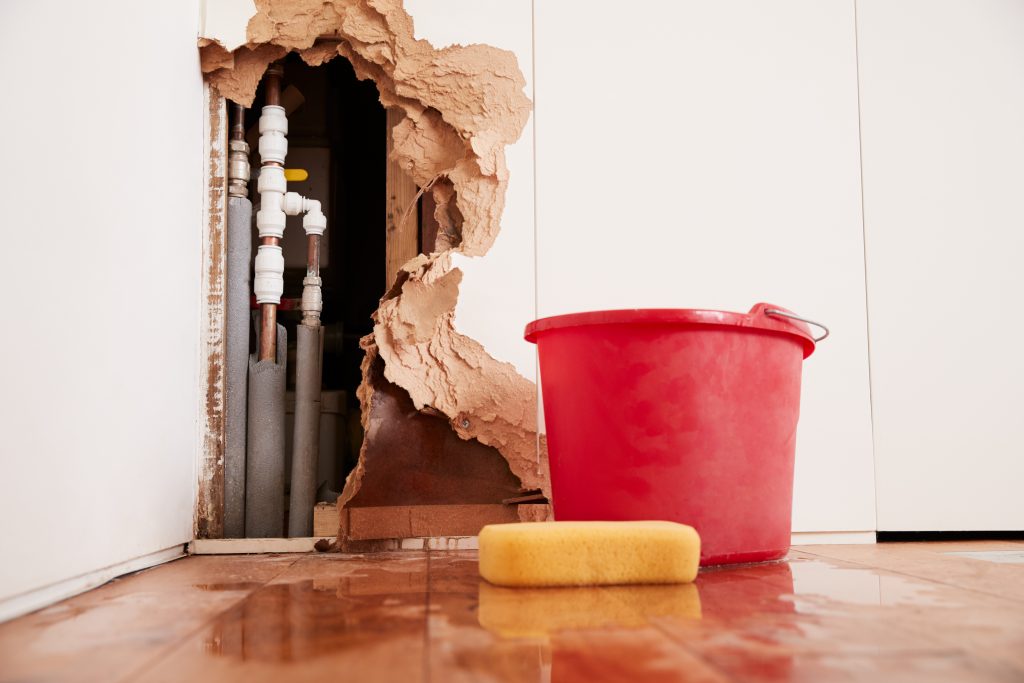We've uncovered the article on Finding hidden leaks down the page on the net and think it made good sense to talk about it with you on this site.

Early discovery of dripping water lines can reduce a prospective disaster. Some tiny water leaks may not be visible.
1. Analyze the Water Meter
Every residence has a water meter. Examining it is a proven manner in which assists you find leaks. For starters, turn off all the water resources. Make sure nobody will flush, use the faucet, shower, run the washing machine or dishwasher. From there, most likely to the meter and watch if it will alter. Given that nobody is utilizing it, there need to be no movements. That shows a fast-moving leakage if it relocates. Furthermore, if you detect no changes, wait an hour or two and check back again. This means you might have a slow-moving leakage that can also be below ground.
2. Check Water Consumption
Examine your water costs and track your water usage. As the one paying it, you need to see if there are any disparities. If you detect sudden changes, regardless of your intake coinciding, it suggests that you have leakages in your plumbing system. Bear in mind, your water costs need to drop under the exact same range every month. An abrupt spike in your expense indicates a fast-moving leakage.
Meanwhile, a constant boost on a monthly basis, even with the same behaviors, shows you have a slow-moving leak that's additionally slowly intensifying. Call a plumber to extensively check your residential property, especially if you feel a warm area on your floor with piping underneath.
3. Do a Food Coloring Test
30% comes from toilets when it comes to water consumption. Examination to see if they are running properly. Drop flecks of food shade in the container and also wait 10 mins. If the shade somehow infiltrates your bowl throughout that time without flushing, there's a leakage in between the storage tank and bowl.
4. Asses Outside Lines
Don't neglect to check your outdoor water lines too. Must water seep out of the connection, you have a loosened rubber gasket. One small leakage can waste tons of water and surge your water expense.
5. Assess the circumstance as well as inspect
Property owners must make it a routine to check under the sink counters as well as also inside closets for any bad odor or mold growth. These two warnings indicate a leakage so prompt interest is called for. Doing routine evaluations, even bi-annually, can save you from a major problem.
Check for discolorations as well as weakening as the majority of pipes and devices have a life expectations. If you suspect dripping water lines in your plumbing system, don't wait for it to intensify.
Early detection of leaking water lines can alleviate a possible calamity. Some little water leaks might not be visible. Checking it is a surefire means that aids you find leaks. One little leak can throw away bunches of water as well as spike your water costs.
If you think dripping water lines in your plumbing system, don't wait for it to rise.
WARNING SIGNS OF WATER LEAKAGE BEHIND THE WALL
PERSISTENT MUSTY ODORS
As water slowly drips from a leaky pipe inside the wall, flooring and sheetrock stay damp and develop an odor similar to wet cardboard. It generates a musty smell that can help you find hidden leaks.
MOLD IN UNUSUAL AREAS
Mold usually grows in wet areas like kitchens, baths and laundry rooms. If you spot the stuff on walls or baseboards in other rooms of the house, it’s a good indicator of undetected water leaks.
STAINS THAT GROW
When mold thrives around a leaky pipe, it sometimes takes hold on the inside surface of the affected wall. A growing stain on otherwise clean sheetrock is often your sign of a hidden plumbing problem.
PEELING OR BUBBLING WALLPAPER / PAINT
This clue is easy to miss in rooms that don’t get much use. When you see wallpaper separating along seams or paint bubbling or flaking off the wall, blame sheetrock that stays wet because of an undetected leak.
BUCKLED CEILINGS AND STAINED FLOORS
If ceilings or floors in bathrooms, kitchens or laundry areas develop structural problems, don’t rule out constant damp inside the walls. Wet sheetrock can affect adjacent framing, flooring and ceilings.
https://www.servicemasterbyzaba.com/blog/how-to-detect-water-leakage-in-walls/

Hopefully you enjoyed our section about Finding hidden leaks. Thank you for taking a few minutes to read our piece of content. Make sure you set aside a second to distribute this write-up if you enjoyed reading it. Thanks a lot for going through it.
Timely fixes available.